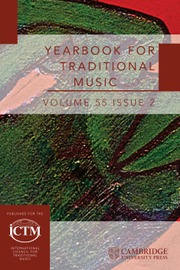Article contents
Shifting Landscapes: Musical Mediations of Modernity in the Malaysian Rainforest
Published online by Cambridge University Press: 07 March 2019
Extract
In a small wooden house at a government resettlement project built for peninsular Malaysia's aboriginal Temiars, a sick man lay wheezing. The illness pacog, harbored by rotting logs in the damp tropical forest, had invaded his body; western cosmopolitan medicine might have diagnosed him with tuberculosis. His breath came in gasps, but no one heard him. Members of his extended family, who might once have shared a roof with him, now lived in single-family households sponsored by Malaysian government “resettlement” projects initiated during the 1970s. Such projects, extensions of the British colonial “jungle forts” and “patterned settlements” established during the 1950s-1960s, also extended European Enlightenment, colonial, and capitalist social and economic ideals about “modernity” and “progress” into the jungle. These included ideas about the “individuated self” and the socioeconomic unit of the nuclear household, reflected in a government-sponsored architecture of single-family dwellings. The reconfigured space of such “modern” Temiar resettlement projects isolates nuclear families from one another, reconfiguring Temiar subjectivities and collectivities.
- Type
- Articles
- Information
- Copyright
- Copyright © 2000 by the International Council for Traditional Music
References
References Cited
Temiar Field Collection Materials
- 3
- Cited by


